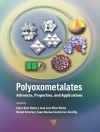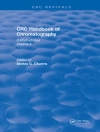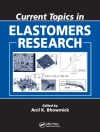By focusing on general molecular mechanisms of antiviral drugs rather than therapies for individual viruses, this ready reference provides the critical knowledge needed to develop entirely novel therapeutics and to target new viruses.
It begins with a general discussion of antiviral strategies, followed by a broad survey of known viral targets, such as reverse transcriptases, proteases, neuraminidases, RNA polymerases, helicases and primases, as well as their known inhibitors. The final section contains several cases studies of recent successful antiviral drug development.
Edited by Erik de Clercq, the world authority on small molecule antiviral drugs, who has developed more new antivirals than anyone else.
表中的内容
Preface
OUTLOOK OF THE ANTIVIRAL DRUG ERA, NOW MORE THAN 50 YEARS AFTER DESCRIPTION OF THE FIRST ANTIVIRAL DRUG
Introduction: The Prehistory
Key Events in Antiviral Drug Development
Antiviral Drugs: Current State of the Art
Antiviral Drugs Active against Herpesviruses (i.e., HSV, VZV, and so on)
Antiviral Drugs Active against Retroviruses (HIV)
Antiviral Drugs Active against Hepatitis B Virus
Antiviral Drugs Active against DNA Viruses at Large
Antiviral Drugs for Influenza A Virus Infections
Antiviral Drugs for Hepatitis C Virus
Antiviral Drugs for Poxviruses (i.e., Variola, Vaccinia, and so on)
Further Options to Treat Virus Infections
Conclusions
INHIBITION OF HIV ENTRY
Introduction
The HIV Glycoproteins
Mechanism of HIV Entry
Inhibition of HIV Entry
Concluding Remarks
TARGETING INTEGRATION BEYOND ATRAND TRANSFER: DEVELOPMENT OF SECOND-GENERATION HIV INTEGRASE INHIBITORS
HIV: The Causative Agent of AIDS
The Integration Step: A Complex Mechanism with Different Possibilities for Inhibition
DNA Binding Inhibitors
Multimerization Inhibitors
Targeting Integrase Cofactor Interactions
Conclusion
FROM SAQUINAVIR TO DARUNAVIR: THE IMPACT OF 10 YEARS OF MEDICINAL CHEMISTRY ON A LETHAL DISEASE
Introduction
The HIV Protease as a Target for AIDS
The Early Protease Inhibitors
The Medical Need for a ‘Next’-Generation PI
How Can We Explain the Superior Antiviral Activity of Darunavir?
Clinical Development of Darunavir
Conclusions and Future Developments
ACYCLIC AND CYCLIC NUCLEOSIDE PHOSPHONATES
Introduction
Nucleoside Phosphonate Strategy for Antivirals
Acyclic Nucleoside Phosphonates
Cyclic Nucleoside Phosphonates
Prodrugs of Nucleoside Phosphonates
Clinical Applications of Antiviral Nucleoside Phosphonates
Conclusions
HELICASE-PRIMASE INHIBITORS: A NEW APPROACH TO COMBAT HERPES SIMPLEX VIRUS AND VARICELLA ZOSTER VIRUS
Introduction
The Role of Helicase Primase in the Replication of HSV
Selective Inhibitors of Helicase Primase as Antiherpesvirus Antivirals
HPIs are Effective in Cell Culture in In Vivo
Effects of HPIs on the Establishment and Reactivation from Latency
HPIs: The Biochemical Basis for the Proposed Mechanism of Action
HSV Acquired Resistance to HPIs
Patterns of Cross-Resistance
Further Insight into Mode of HPI Interaction with the HSV HP Complex from the Study of Resistance Mutations
The Frequency and Origin of HPI-Resistance Mutations
UL5 Lys356Asn: A Mutation Conferring High Resistance to HPI
The Origin of Resistance Mutations at High Frequency
Conclusions
CYCLOPHILIN INHIBITORS
Introduction
Cyclophilin Overview
Cyclophilin Inhibitors Currently in Clinical Development
Cyclophilin and HIV
Cyclophilin and Hepatitis C
Clinical Results in HCV
Activity against Other Viruses
New Noncyclosporine Cyclophilin Inhibitors
Conclusion
ALKOXYALKYL ESTER PRODRUGS OF ANTIVIRAL NUCLEOSIDE PHOSPHATES AND PHOSPHONATES
Introduction
Enhancing the Oral Activity of Antiviral Compounds: Overview of the Development of Alkoxyalkyl Esterification Approach
Alkylglycerol and Alkoxyalkyl Prodrugs of Phosphonoformate: Enhanced Antiviral Activity and Synergism with AZT
Alkoxyalkyl Esters of Nucleoside 5′-Monophosphates
Oral Prodrugs of Acyclic Nucleoside
Intraocular Delivery of Antiviral Prodrugs for Treatment of Prevention of Cytomegalovirus Retinitis
Conclusion
MARIBAVIR: A NOVEL BENZIMIDAZOLE RIBONUCLEOSIDE FOR THE PREVENTION AND TREATMENT OF CYTOMEGALOVIRUS DISEASES
Cytomegalovirus Diseases: Unmet Challenges
Maribavir: Antiviral Activity
Maribavir: Mechanisms of Action and Resistance
Preclinical Studies
Clinical Development of Maribavir: Early Phase I
Clinical Development in a Transplant Population
Summary and Conclusions
ANTI-HCMV COMPOUNDS
Introduction
Anti-HCMV Drugs in Clinical Use
Need for New Anti-HCMV Drugs
Novel Viral Targets
Cellular Targets
Conclusions
LETHAL MUTAGENESIS AS AN UNCONVENTIONAL APPROACH TO COMBAT HIV
Introduction
Viral Fitness and Intrinsic Mutagenesis in RNA Viruses and Retroviruses
Fundamentals of Lethal Mutagenesis
Mutagenic Pharmaceuticals as Antiviral Agents
KP-1212: From Bench to Clinic
Challenges and Advantages of Lethal Mutagenesis Compared to Conventional Strategies
Concluding Remarks and Future Perspectives
RECENT PROGRESS IN THE DEVELOPMENT OF HCV PROTEASE INHIBITORS
Introduction
HCV Therapy
Mechanism of Resistance and Cross-Resistance to NS3 Protease Inhibitors
Antiviral Potency and Clinical Efficacy of HCV Protease Inhibitors
Future Directions
ANTIVIRAL RNAi: HOW TO SILENCE VIRUSES
The Discovery of RNA Interference
Therapeutic Application of the RNAi Mechanism
Mammalian Viruses and the RNAi Mechanism
Basic Design of an RNAi Therapy against Viruses
Selecting Optimal Targets
Prevention of Viral Escape
Multiplexing si RNAs
Delivery Issues
Potential Risks of an RNAi Therapy
Example of an Acute Infection: RSV
Example of a Chronic Infection: HIV-1
Future Perspective
NEURAMINIDASE INHIBITORS AS ANTI-INFLUENZA AGENTS
Introduction
Influenza Neuraminidase as a Drug Target
Neuraminidase Active Site and Inhibitor Binding
Small-Molecule Inhibitors of Influenza Neuraminidase
Mechanism of Resistance
Influenza Neuraminidase Inhibitors Based on Other Scaffolds
Clinical Use of Neuraminidase Inhibitors
Concluding Remarks
FROM TIBO TO RILPIVIRINE: THE CHRONICLE OF THE DISCOVERY OF THE IDEAL NONNUCLEOSIDE REVERSE TRANSCRIPTASE INHIBITORS
Introduction
The TIBO Derivatives
From Loviride to Rilpivirine
Rilpivirine: How Does It Act?
Clinical Proof of Concept
Pharmacokinetics and Drug-Drug Interactions
Potency and Resilience to NNRTI Resistance
Conclusion
关于作者
Erik De Clercq, M.D., Ph D is currently President of the Rega Foundation, a member of the Belgian (Flemish) Royal Academy of Medicine and of the Academia Europaea, and a Fellow of the American Association for the Advancement of Science. He is an active Emeritus Professor of the Katholieke Universiteit Leuven (K.U.Leuven), Belgium. He is honorary doctor of the Universities of Ghent, Belgium, Athens, Greece, Ferrara, Italy, Jinan (Shandong), China, Charles (Prague), Czech Republic, and Jihoceska (Ceske Budejovice), Czech Republic, and Tours, France.
For his pioneering efforts in antiviral research, Professor De Clercq received in 1996 the Aventis award from the American Society for Microbiology, and in 2000 the Maisin Prize for Biomedical Sciences from the Belgian National Science Foundation. In 2008 he was elected Inventor of the Year by the European Union. Jointly with Dr. Anthony Fauci, Prof. De Clercq received the Dr. Paul Janssen Award for Biomedical Research in 2010.
He is the (co)inventor of a number of antiviral drugs, used for the treatment of HSV (valaciclovir, Valtrex , Zelitrex ), VZV (brivudin, Zostex , Brivirac , Zerpex ), CMV (cidofovir, Vistide ), HBV (adefovir dipivoxil, Hepsera ), and HIV infections (AIDS) (tenofovir disoproxil fumarate, Viread ).












